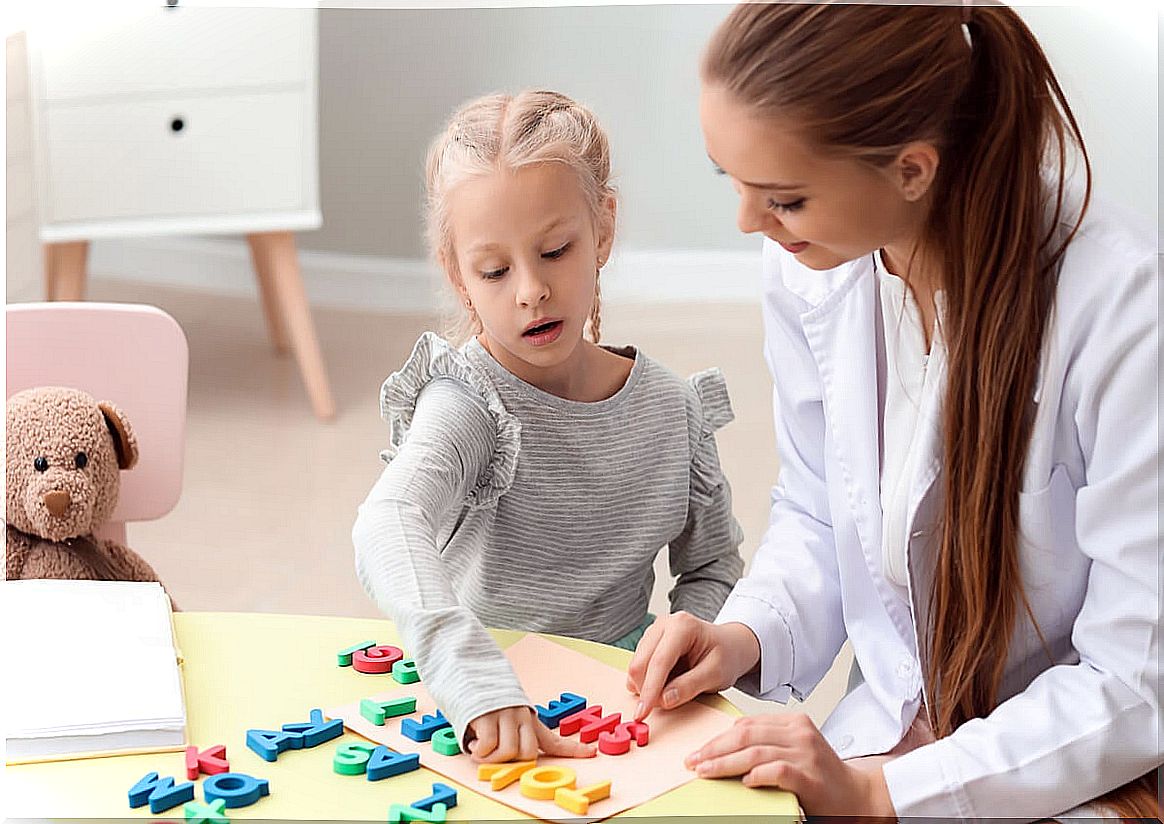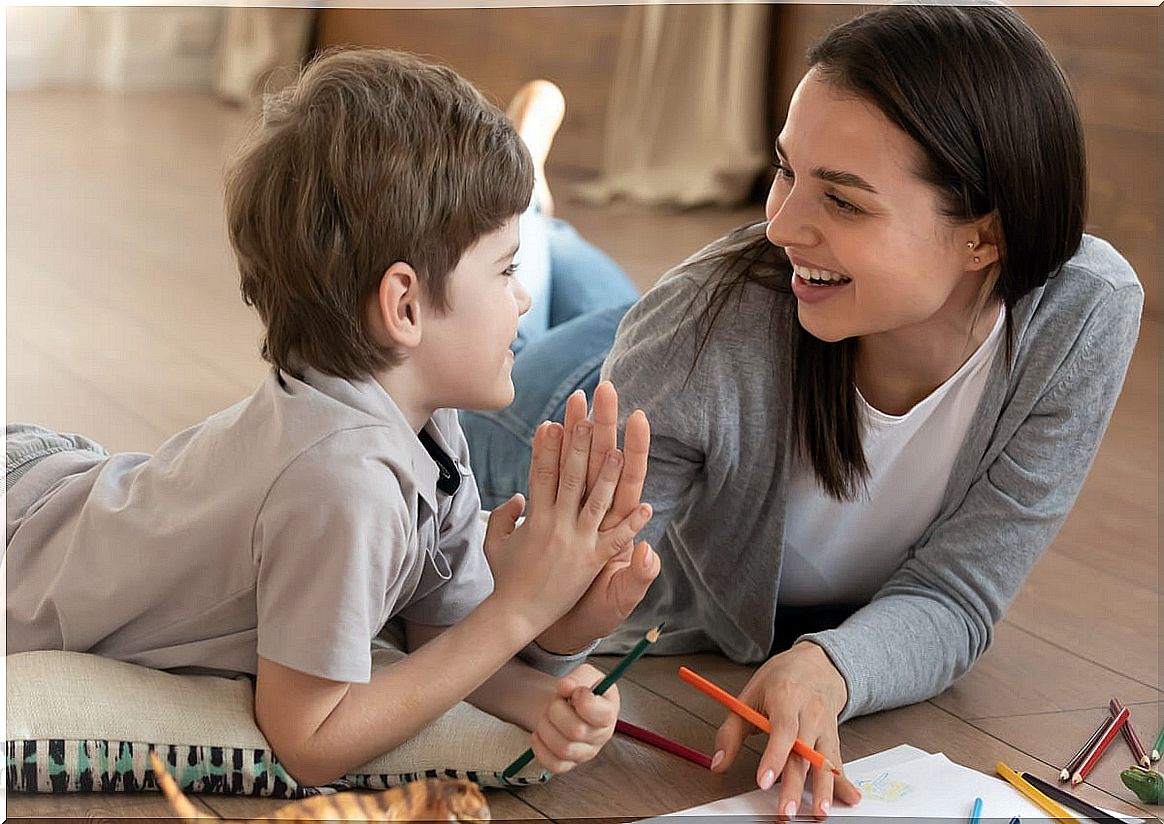5 Games To Work On Dyslexia At Home

Games to work on dyslexia are a very valuable tool that makes it possible to reinforce the results achieved with interventions at an educational level and, simultaneously, give these activities a playful nature. However, not all games are good for training the so-called phonological awareness.
Here are five games to work with dyslexia in a fun way at home or anywhere else. They are games that also do not require economic investment and are easy to learn.
Dyslexia: educational and emotional intervention
Today, dyslexia is largely familiar terrain. We are talking about a learning disorder that affects written language in a generalized way and that has a high prevalence in the population, around 10%. It has also been discovered that they are minds that stand out for creativity and capacity for abstraction.
Regarding dyslexia intervention, experts recommend early intervention in the form of re-education. The smaller the child, the more benefit will be obtained from the intervention as a result of the enormous brain plasticity in the first years of life.
On the other hand, science has shown that emotional intervention is also needed. This is because dyslexia is associated with emotional difficulties, such as anxiety or low self-esteem. For all these reasons, games to work on dyslexia can be a key element due to their playful nature and reinforcing self-esteem.

5 games to work on dyslexia at home
Games to work on dyslexia should have the main objective of improving phonological awareness. This ability to recognize sounds associated with graphemes and use them appropriately is often particularly impaired in children with dyslexia. Here are five games to work on dyslexia as a family.
1. A classic: the hanged man
Hangman is a classic and also one of the most effective dyslexia games. Don’t let its simplicity fool you: mentally thinking of a word without writing it is one of the best training for phonological awareness.
For its application, remember to start with very simple words, such as monosyllables, and increase the complexity. Also, it is important not to correct those spelling mistakes that have not been worked on until that moment.
On the other hand, frustration can sometimes appear; in this sense, we can encourage them and ask them to check if their options fit in the gaps of the desired word.
2. Anywhere: chained words
Playing chain words consists of segmenting words by syllables and starting a new one with the last one. It is played in turns, until one of the players has no answer.
You can help each other with claps for each syllabic stroke or simplify it initially and start the words with the last letter only.
This game to work on dyslexia works on two important aspects when it comes to promoting phonological awareness.
- First, the segmentation of words by syllables is closely related to the acquisition of reading and syllabic awareness.
- Second, verbal fluency is trained, which is one of the aspects that are usually most impaired in a dyslexia profile. In addition, you do not need any material and can be played anywhere.
3. Future poets: rhyming game
In this game to work on dyslexia, which consists of making rhymes, it has the advantage that we can increase the difficulty. You can start by building words that have assonance rhyme, raise the bar with consonant rhyme, and once you’ve mastered the subject, create fun poems.
Playing rhymes has the difficulty that, at first, it can be difficult to understand in cases of language difficulties. For this reason, it is convenient that examples of words that may or may not rhyme are given beforehand, and that the child answers accordingly until he or she achieves this prior skill.

4. Dyslexia and memory: a game of memory
Memory is another of the classic games that, although it is mainly known for its memory training, can also simultaneously serve to work on phonological awareness. But beware, not all versions are valid . We require a “memory” that has the words written down and, on the couple’s card, a drawing of it.
When the child uses this game to work on dyslexia, he visualizes and associates the word and its representation, reinforcing the so-called lexical way of reading. This route is what allows us to read fluently. Thus, when we are more expert readers we no longer need to read the word “house” sound by sound, but rather we enjoy a representation of it that gives us speed.
5. The game of the goose … of letters
The traditional game of the goose can become a great tool to work on phonological awareness. It is a goose of letters that you can find very easily on the internet. Following the classic rules, you advance from square to square with a dice but, in addition, you have to read the word correctly if you want to advance.
This game to work on dyslexia has a wide range of boards depending on the content that is being worked on. For example, if the child is learning a certain letter, words will appear on that goose in which it appears in different syllabic positions.
Games to work on dyslexia and, above all, self-esteem
Dyslexia is a written language learning disorder that requires early intervention. Being associated with different emotional pathologies, interventions usually include aspects related to their prevention and self-esteem.
One way to reinforce the intervention from home is games to work on dyslexia. In a playful way and as a family, we can help the child to train phonological awareness, an essential objective in dyslexia. For this we propose classic games such as hangman, letter goose, memory, rhymes or chained words.
These types of games to work dyslexia do not require financial investment and many of them can be played anywhere. The most important thing in their application is that the child enjoy them and that the difficulty is adjusted so that they can feel progress, thus reinforcing their self-esteem.









